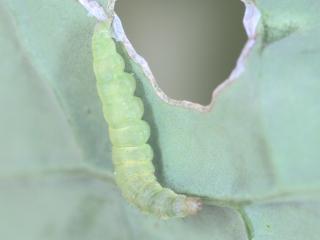Diamondback moths may be a problem this spring
- Cadoux
- Yerecoin
- Tammin
- Brookton
David Stead (Anasazi Agronomy) reports finding diamondback moth (DBM) caterpillars and adults in canola crops everywhere across his advisory district which encompasses the shires within Cadoux to Yerecoin and Tammin to Brookton. They are in considerable numbers and there are new moths as well, indicating that they have completed one life cycle already. David is concerned that DBM populations could 'get ugly' in spring.
Growers and consultants are advised to monitor for DBM, especially from August onwards, by doing at least four lots of 10 sweeps with an insect net at various locations in each crop. DBM caterpillars drop from plants when disturbed and bashing some plants, especially those with holes in leaves, over an ice cream container is a good initial indication of their presence if you don’t have a sweep net handy.
DBM are difficult to control because they breed prolifically and insecticide sprays have limited coverage in advanced canola canopies. Brassica weeds (for example, radish) and volunteer canola present prior to sowing forms a green bridge and can often ramp up populations prior to spring when they are usually causing damage to crops. Cold winter weather will hinder their reproduction and spread to some extent, but populations of DBM present in crops can reproduce rapidly and unpredictably so monitoring is recommended.
Thresholds for control are:
- pre-flowering (stressed crop) - 30 or more grubs per 10 sweeps
- pre-flowering (no stress) - 50 or more grubs per 10 sweeps.
For more DBM information refer to DAFWA’s Diagnosing diamondback moth and the GRDC's Diamondback moth fact sheet.
For more information contact Dusty Severtson, Development Officer, South Perth on +61 (0)8 9368 3249.

